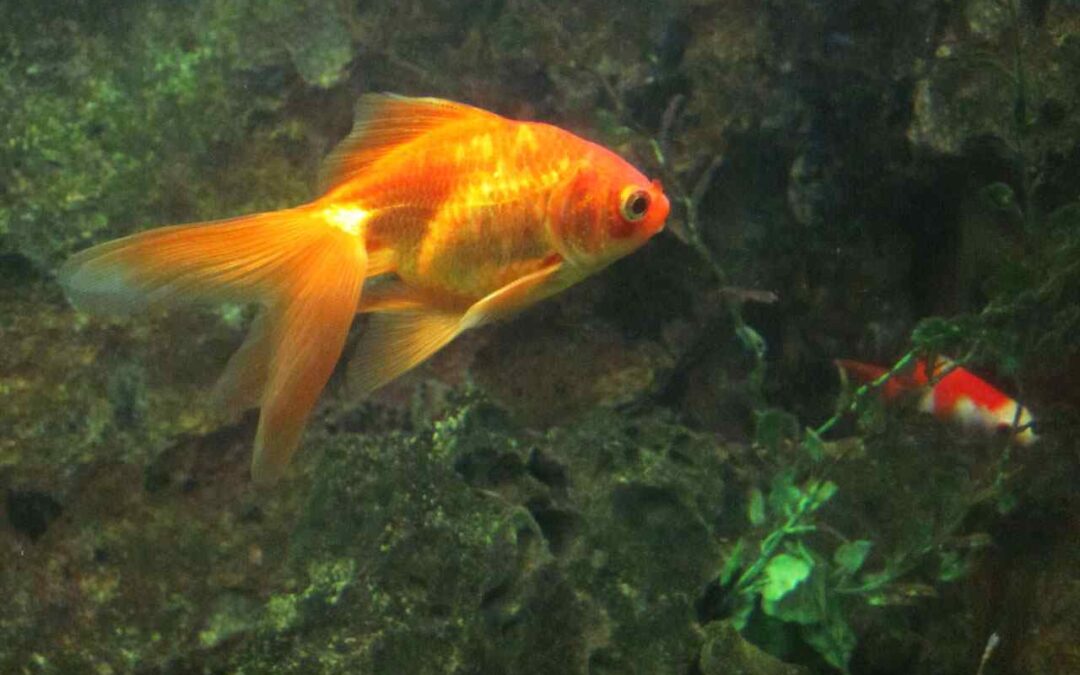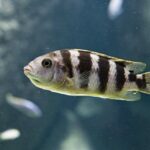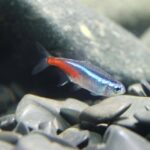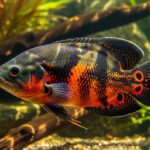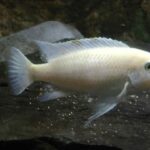Goldfish are one of the most beloved freshwater aquarium pets worldwide. They’re colorful, social, and come in a surprising variety of shapes, sizes, and personalities. Whether you’re a beginner or a long-time aquarist, getting to know the different types of goldfish can make choosing the right fish for your tank a lot more fun—and successful.
Goldfish are more than just the classic orange swimmers we often see in cartoons or carnival prizes. From long flowing fins to bubble-like eyes and round bodies, goldfish have been selectively bred over centuries to produce dozens of stunning varieties. Each type has its own care requirements, temperaments, and physical characteristics.
Let’s dive into the beautiful world of goldfish!
Goldfish Basics: What You Should Know First
Before we explore the specific types of goldfish, here are a few important things to keep in mind:
- Goldfish are not tropical fish. They thrive in cool freshwater temperatures ranging from 65°F to 75°F (18°C to 24°C).
- They are social and intelligent. Goldfish recognize their owners and even learn feeding routines.
- Tank size matters. Contrary to popular belief, goldfish should never live in small bowls. Most types need at least 20 gallons of water per fish.
- They can live a long time. With proper care, goldfish can live 10 to 20 years—and some even longer.
Now let’s meet the many fascinating types of goldfish you might consider for your tank.
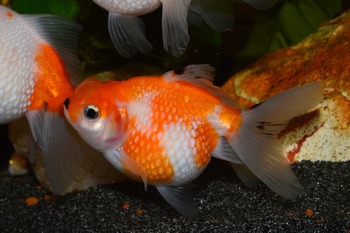
1. Common Goldfish (Carassius auratus auratus)
Let’s start with the original and most recognizable variety. Common goldfish are hardy, fast swimmers and are often orange but can also be white, yellow, or red.
Key Features:
- Slim, torpedo-shaped bodies
- Single tail fin
- Very active and sociable
Best For: Beginners and outdoor ponds. These fish are less sensitive and do well in unheated tanks.
2. Comet Goldfish
The comet is similar to the common goldfish but has a longer, flowing tail that looks like a comet streaking through water—hence the name.
Key Features:
- Slender body
- Long, deeply forked tail
- Very fast and energetic swimmers
Best For: Larger tanks or ponds where they have room to move.
3. Shubunkin Goldfish
Known for their stunning calico patterns, shubunkins have splashes of red, blue, orange, and black. They resemble comets in body shape but have a more speckled, “paint-splashed” look.
Key Features:
- Calico coloration with blue tones
- Single tail, comet-like body
- Hardy and fast swimmers
Best For: Outdoor ponds and spacious tanks with other single-tailed varieties.
4. Fantail Goldfish
Fantails are the gateway to fancy goldfish breeds. They have egg-shaped bodies and beautiful double tails that fan out like a veil.
Key Features:
- Rounder body
- Double tail fin
- Gentle and slower swimmers
Best For: Beginner fancy goldfish keepers; peaceful tank environments.
5. Ryukin Goldfish
Ryukins have a distinctive hump on their back right behind the head, giving them a prominent, tall look. They are hardy but can be a bit more assertive with other slow-moving fish.
Key Features:
- Deep-bodied with a sharp shoulder hump
- Can grow large (up to 8 inches or more)
- Comes in long and short tail varieties
Best For: Aquarists with medium to large tanks and experience with fancy breeds.
6. Oranda Goldfish
Orandas are known for their “wen,” a fleshy growth that develops on the top of their heads. It looks like a raspberry and gives them a unique, somewhat royal appearance.
Key Features:
- Prominent head growth
- Double tail
- Comes in various colors: red, black, calico, and more
Note: The wen requires some attention—it’s prone to infections if not kept clean.
Best For: Intermediate hobbyists willing to give a little extra care.
7. Black Moor Goldfish
The Black Moor is a type of telescope goldfish with bulging eyes and a deep black velvet-like color. Their poor vision makes them slower swimmers and a bit shy.
Key Features:
- Black coloring
- Telescope eyes
- Chubby body and double tail
Best For: Calm tanks without fast or aggressive fish.
8. Telescope Goldfish
These goldfish have eyes that protrude from the sides of their heads. Though striking to look at, their vision is limited.
Key Features:
- Round body with large, telescope-like eyes
- Can come in a variety of colors
- Very delicate
Best For: Calm tanks with other slow swimmers.
9. Ranchu Goldfish
Often referred to as the “king of goldfish” in Japan, Ranchus are adorable, round-bodied goldfish with no dorsal fin and a prominent head growth (wen). They resemble aquatic teddy bears!
Key Features:
- No dorsal fin
- Egg-shaped body
- Large head growth
Best For: Experienced hobbyists; needs a smooth substrate and gentle tankmates.
10. Lionhead Goldfish
Similar to Ranchus but with more pronounced head growth, Lionheads also lack a dorsal fin, which gives them a waddling swimming motion.
Key Features:
- Large, puffy head growth
- No dorsal fin
- Round body
Best For: Calm, low-current tanks with other slow goldfish.
11. Celestial Eye Goldfish
These are perhaps the most unique of all goldfish types. Their eyes are turned permanently upward—so they’re always gazing at the ceiling. They’re delicate and need specific care.
Key Features:
- Upward-facing eyes
- No dorsal fin
- Very slow and easily injured
Best For: Very calm tanks or solo displays. Not recommended for beginners.
12. Bubble Eye Goldfish
These fish have fluid-filled sacs under their eyes that wobble as they swim. They’re extremely delicate and can easily get injured on sharp objects.
Key Features:
- Transparent eye sacs
- No dorsal fin
- Peaceful, slow swimmers
Best For: Hobbyists with bubble-eye-friendly tanks—no sharp objects, smooth decorations.
Fancy vs. Common Goldfish: What’s the Difference?
Goldfish can be divided into two broad categories:
- Single-tailed (Common types): Includes Common, Comet, and Shubunkin goldfish. These are hardier, more active, and do well in outdoor ponds.
- Fancy or Double-tailed: Includes breeds like Oranda, Ranchu, Fantail, and Telescope goldfish. They are generally slower, more sensitive, and better suited for indoor tanks with stable conditions.
Each type offers its own charm and care level, so it’s important to match the fish to your experience and aquarium setup.
Goldfish Care Tips (No Matter the Type)
- Tank Size: Goldfish need space! 20 gallons per fish is ideal.
- Filtration: Goldfish are messy eaters. Use a strong filter to keep the water clean.
- Temperature: Keep water between 65–75°F (18–24°C), unless you have tropical tankmates.
- Diet: Feed high-quality pellets, veggies, and occasional protein like brine shrimp.
- Companions: Fancy goldfish do best with other fancy goldfish. Avoid mixing fast swimmers with slow ones.
Frequently Asked Questions
1. What is the easiest type of goldfish to care for?
Common and Comet goldfish are the easiest. They’re hardy, adaptable, and do well in larger tanks or ponds.
2. Can different types of goldfish live together?
Yes, but with caution. Stick to fish with similar swimming speeds and care needs. For example, don’t keep a Telescope Eye with a fast-moving Comet.
3. Do goldfish need heaters?
Most goldfish don’t. They prefer cooler water. But if your home gets very cold, a low-watt heater might be needed to prevent temperature drops.
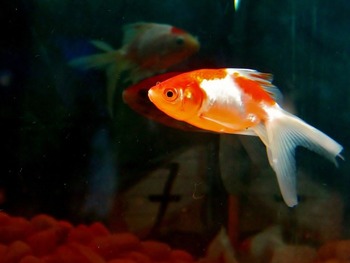
4. How long do goldfish live?
With proper care, goldfish can live 10 to 20 years. Some have even lived over 30 years in well-maintained ponds.
5. How big can goldfish get?
It depends on the type and environment. Common goldfish can grow over 12 inches in ponds. Fancy types usually stay between 6 to 8 inches.
6. Do goldfish get lonely?
Goldfish are social and enjoy company. Keeping them in pairs or small groups—if space allows—can improve their overall happiness and reduce stress.
Final Thoughts
Goldfish are more than just starter pets—they’re intelligent, long-lived, and full of personality. From the classic Common Goldfish to the puffy-cheeked Bubble Eye, there’s a type of goldfish for every aquarist.
Choosing the right variety depends on your experience level, tank size, and how much time you’re willing to invest in care. Whether you’re looking for something hardy and energetic, or fancy and elegant, there’s a goldfish that’ll swim its way into your heart.
Pro tip: Always do your research and prepare the right environment before bringing home a new goldfish. They may be easygoing, but they deserve thoughtful care like any other pet.

